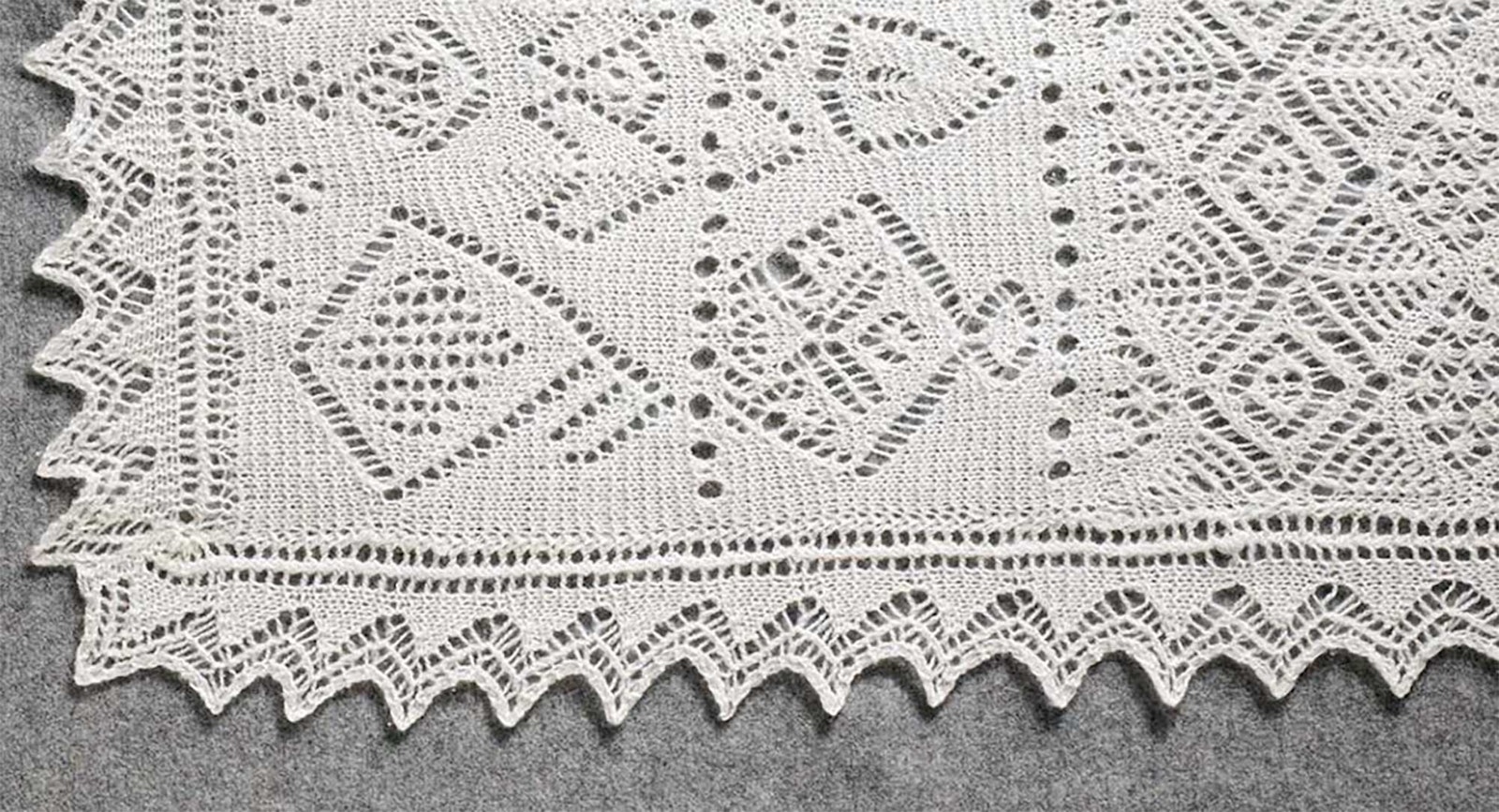The oldest knitted infant garments, which may have been designated for a special event such as baptism, date from the seventeenth century. The modern christening gown did not appear until after 1700, when more families began to have enough wealth to be able to show it off.
Most gowns, as today, were constructed of cloth. Paintings of the time show infants and children of both genders wearing long white, lace-trimmed dresses. A handknitted baptismal gown would have been unheard of before 1800. Only poor people knitted, and what they knitted would have been made primarily for warmth.

The christening gown Ava T. Coleman designed and knitted for her granddaughter, Ruth Luck. The dress pattern was created using trinity stitches; it is trimmed at the bottom with the author’s mother’s favorite Rose Leaf lace edging. Size 50 cotton thread. Photos by Joe Coca.
By 1835, however, knitting was becoming a fashionable pastime for middle- and upper-class women. Although still rare, knitted christening gowns began to appear. An exquisite example is the Knitting Bronze Medal winner of the 1851 Great Exhibition, also now in the collection of the Victoria and Albert Museum. Constructed of 6,000 yards (5,486 m) of size 100 cotton thread, its intricate motifs contain 1,464,859 stitches. The gown took its creator, Sarah Ann Cunliffe, five months to complete.

Detail of knitted christening gown.
By the 1950s, the tradition of dressing an infant, especially a boy, in an elaborate unisex christening gown was on the wane as parents began to choose simpler, machine-made, gender-specific outfits. Today, christening gowns are again in vogue for infant baptism.
Knitted gowns are still as rare as they were more than 150 years ago, but options for acquiring them have expanded: they are now available as commercially knitted garments or may be handknitted to create an heirloom for future generations. I knitted the one shown here for my granddaughter, Ruth Luck, for her christening in 1996.
—Ava T. Coleman
Ava T. Coleman began knitting at the age of three; at sixteen, she was marketing her knits in Snowmass and Aspen, Colorado, and teaching knitting, both to her fellow Girl Scouts and at a local yarn shop. Named a Colorado State Heritage Artist in 1997, she used the accompanying $5,000 grant to educate fiber artists and the public about the history of lace knitting.
Download the Fall 2018 issue of PieceWork to knit Ava T. Coleman’s magnificent christening gown.
Never miss an issue of PieceWork - subscribe today!

